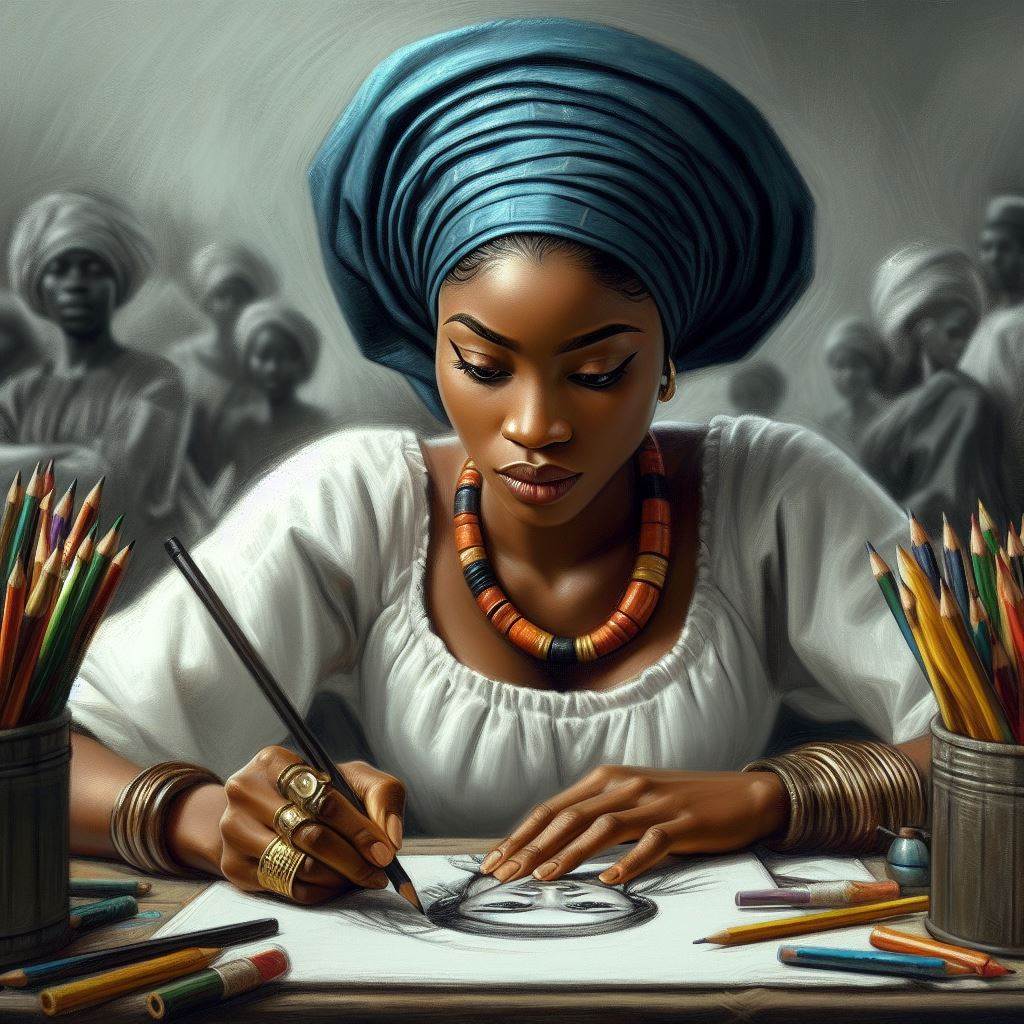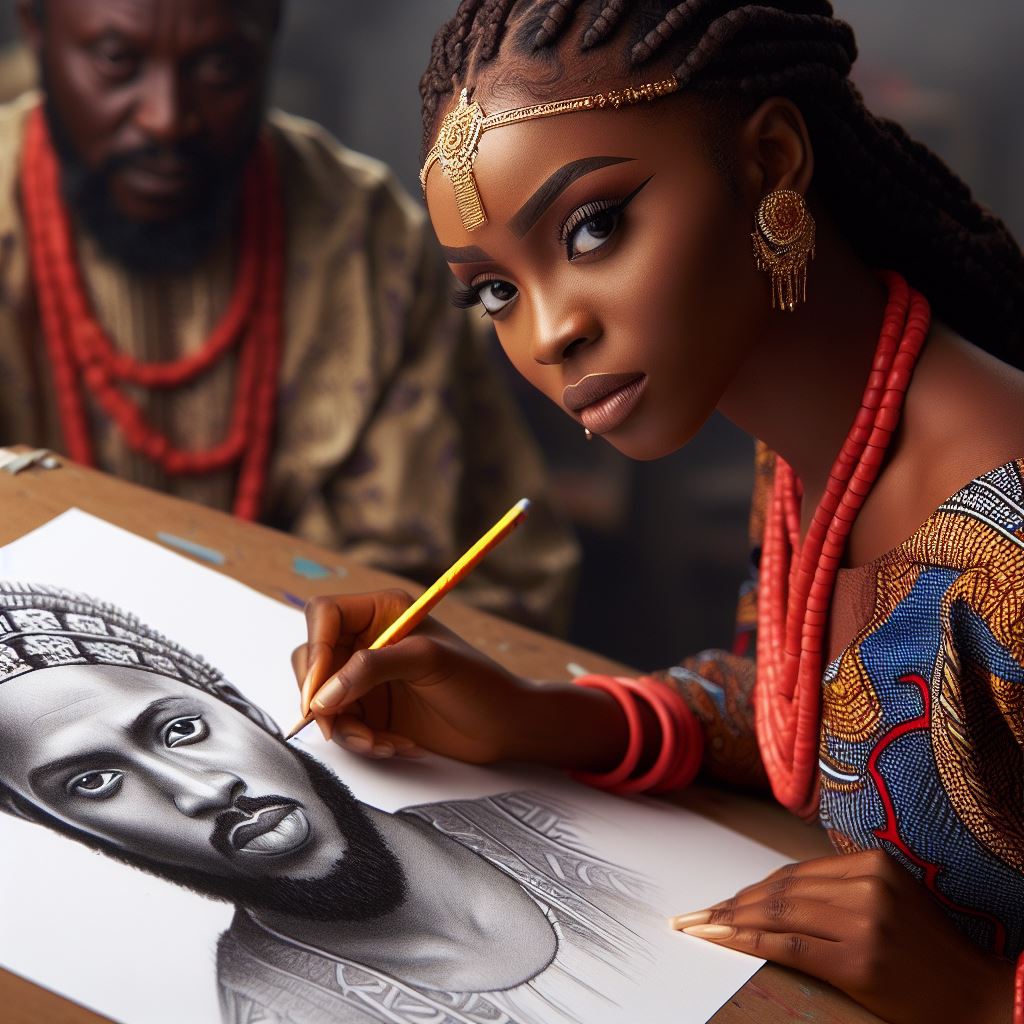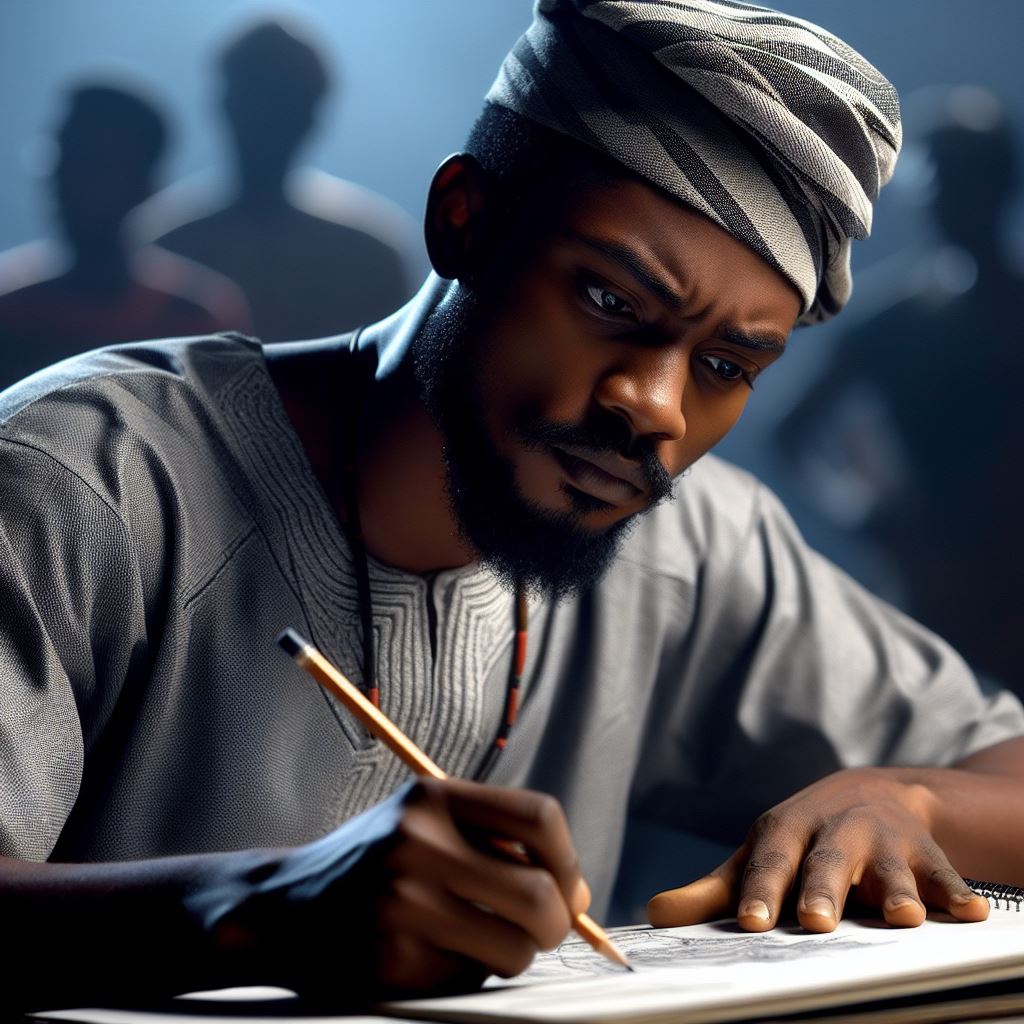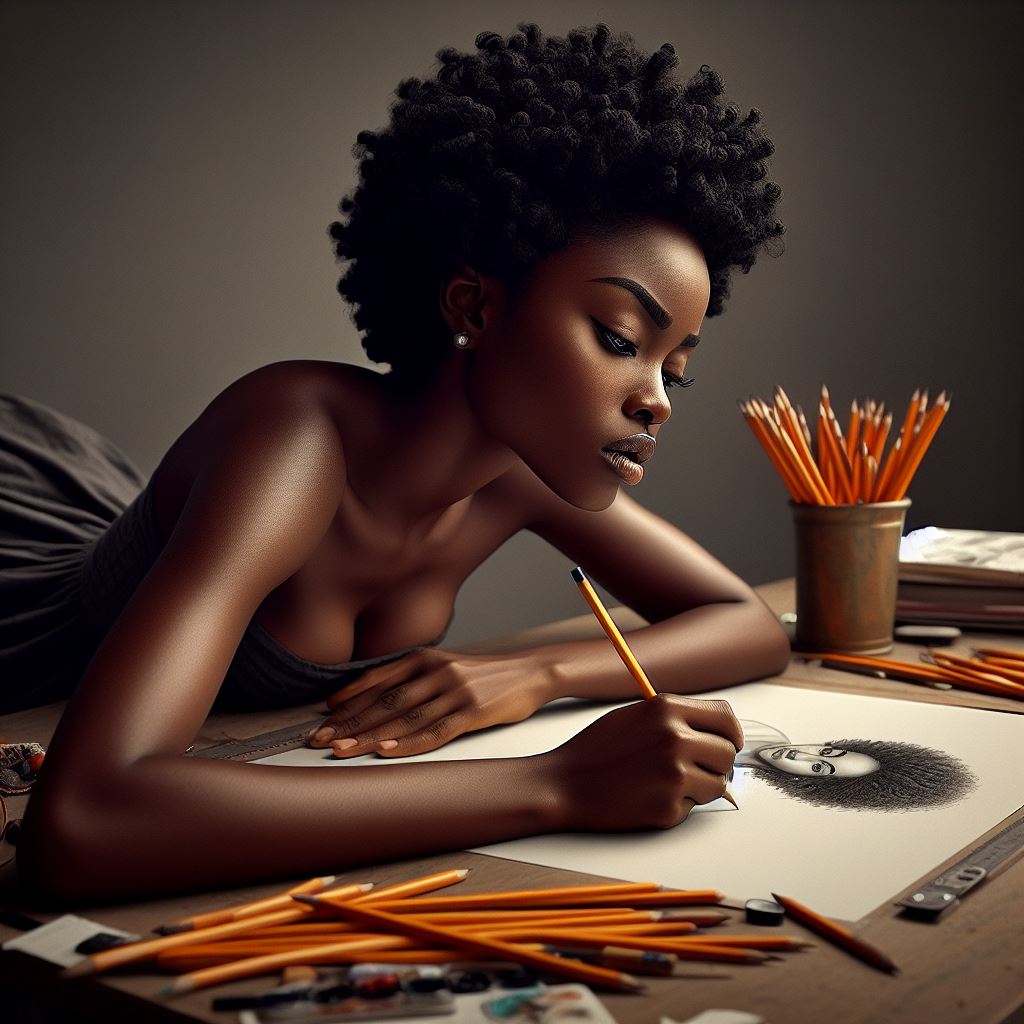Introduction
In Nigeria, the history of fine and applied art is vibrant and multifaceted.
Fine art, including painting, sculpture, and drawing, has roots that trace back centuries, often intertwined with cultural and spiritual practices.
Applied art, on the other hand, encompasses a wide range of disciplines such as textiles, ceramics, graphic design, and architectural ornamentation, with each form serving utilitarian functions while also embodying artistic expression.
Fine art in Nigeria often reflects the country’s rich cultural tapestry, drawing inspiration from traditional motifs, folklore, and societal values.
Meanwhile, applied art finds its place in everyday life, beautifying homes, clothing, and public spaces while also preserving cultural heritage and promoting craftsmanship.
The significance of both fine and applied art in Nigerian culture and society cannot be overstated.
They serve as vehicles for storytelling, preserving history, and expressing social commentary.
Additionally, they play a crucial role in fostering creativity, promoting tourism, and contributing to the economy through various art-related industries such as tourism, crafts, and design.
Influence of technology on Nigerian art
Technology has significantly impacted the way Nigerian artists create and promote their work in recent years.
The emergence of digital art tools and software has revolutionized artistic expression, allowing artists to explore new mediums and techniques.
Impact of digital art tools and software on Nigerian artists
Nigerian artists are embracing digital tools such as graphic design software, digital drawing tablets, and 3D modeling software to enhance their creative process.
These tools have opened up new possibilities for artists to experiment with different styles and techniques, ultimately expanding the boundaries of Nigerian art.
Use of social media platforms for art promotion and sales
Social media platforms like Instagram, Twitter, and Facebook have become essential tools for Nigerian artists to showcase their work to a global audience.
Artists can easily connect with art enthusiasts, collectors, and galleries, thus increasing their visibility and potential for sales.
Incorporation of virtual reality and augmented reality in art exhibitions
Nigerian artists are increasingly experimenting with virtual reality (VR) and augmented reality (AR) technologies to create immersive art experiences.
These technologies allow artists to push the boundaries of traditional art exhibitions by engaging viewers in interactive and dynamic ways.
Nigerian artists are leveraging VR and AR to transport viewers into virtual art galleries, where they can explore and interact with art installations in a completely new and engaging manner.
Overall, technology has empowered Nigerian artists to embrace innovation, reach wider audiences, and push the boundaries of traditional art forms.
As technology continues to evolve, Nigerian artists will undoubtedly continue to incorporate new tools and platforms into their artistic practice, further enriching the vibrant and diverse landscape of Nigerian fine and applied art.
Read: Exploring Semiotics in Communication Arts
Rising popularity of contemporary Nigerian artists
Recognition of Nigerian Artists on the Global Stage
Nigerian artists are gaining recognition worldwide for their innovative and captivating works.
In recent years, they’ve made significant strides in the international art scene, earning acclaim for their creativity, craftsmanship, and unique perspectives.
This newfound visibility has opened doors to prestigious opportunities, allowing Nigerian artists to showcase their talent on a global platform.
Success Stories of Nigerian Artists in International Art Fairs and Exhibitions
Nigerian artists have made their mark in prominent international art fairs and exhibitions, captivating audiences with their compelling narratives and striking aesthetics.
From the bustling streets of Lagos to prestigious galleries in New York and Paris, Nigerian artworks have left a lasting impression, garnering praise from critics and collectors alike.
Artists like Njideka Akunyili Crosby, El Anatsui, and Yinka Shonibare have achieved remarkable success, with their works fetching record prices and gracing the walls of renowned institutions worldwide.
Increased Demand for Nigerian Art in International Markets
The demand for Nigerian art in international markets has surged in recent years, fueled by growing appreciation for African art and culture.
Collectors from around the globe are drawn to the vibrancy, diversity, and authenticity of Nigerian artworks, recognizing their value as both aesthetic treasures and investment opportunities.
As a result, Nigerian artists are enjoying newfound visibility and financial success, with their works commanding premium prices at auctions and attracting prestigious commissions from galleries and museums.
In summary, the recognition of Nigerian artists on the global stage is a testament to the country’s rich artistic heritage and burgeoning creative talent.
Through their participation in international art fairs and exhibitions, Nigerian artists are showcasing the depth and diversity of their artistic practice, earning accolades and acclaim from audiences worldwide.
With increased demand for Nigerian art in international markets, the future looks promising for the country’s vibrant art scene, offering new opportunities for growth, collaboration, and cultural exchange on a global scale.
Read: Developing Critical Thinking in Language Arts
Fusion of traditional and modern techniques in Nigerian art
Integration of traditional Nigerian art forms with contemporary styles
The fusion of traditional and modern techniques in Nigerian art has brought about a significant shift in the way art is perceived and created in the country.
Artists are now blending the rich cultural heritage of Nigeria with contemporary styles to produce unique and innovative works of art.
Use of mixed media and unconventional materials in art production
One of the key trends in Nigerian art is the integration of traditional Nigerian art forms with modern art techniques.
Artists are combining traditional elements such as motifs, symbols, and techniques with contemporary styles to create a new and exciting visual language.
This fusion not only showcases the diversity of Nigerian art but also creates a bridge between the past and the present.
Another important trend in Nigerian art is the use of mixed media and unconventional materials in art production.
Artists are experimenting with different materials such as fabric, beads, metal, and even plastic to create multi-dimensional and textured artworks.
This innovative approach to art production challenges the conventional boundaries of art and allows artists to express themselves in new and exciting ways.
Preservation of Nigerian cultural heritage through modern art techniques
Furthermore, modern Nigerian artists are actively involved in preserving the country’s cultural heritage through their artwork.
By incorporating elements of Nigerian traditions, folklore, and customs in their art, artists are not only celebrating their heritage but also raising awareness about the importance of preserving Nigeria’s rich cultural identity.
This fusion of traditional and modern techniques serves as a powerful tool for cultural preservation and storytelling.
Basically, the fusion of traditional and modern techniques in Nigerian art has revolutionized the artistic landscape in the country.
Artists are breaking new ground by blending traditional Nigerian art forms with contemporary styles, using mixed media and unconventional materials, and preserving the country’s cultural heritage through their artwork.
This trend not only demonstrates the creativity and innovation of Nigerian artists but also showcases the richness and diversity of Nigeria’s artistic heritage.
Read: Student Experiences: Life in Communication Arts
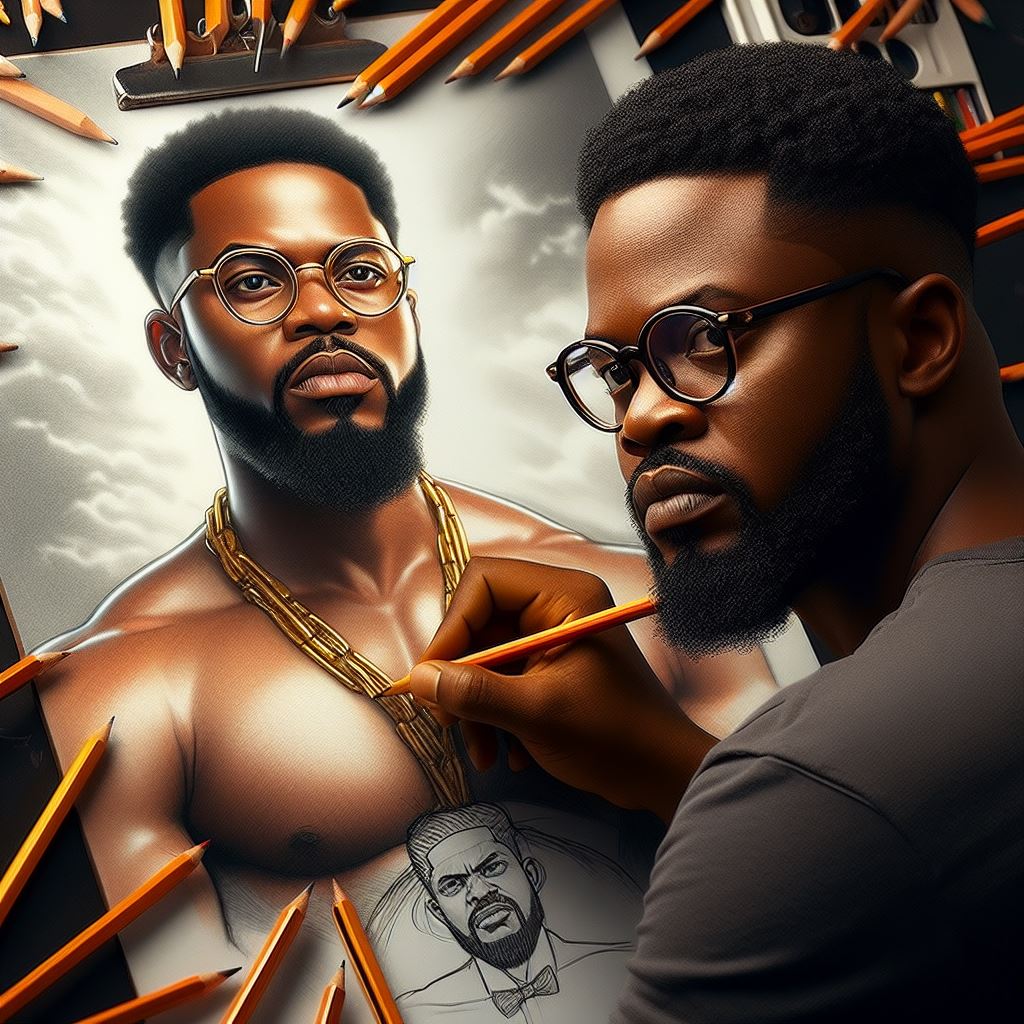
Collaboration between Nigerian artists and international creatives
Joint art projects between Nigerian artists and foreign collaborators
Collaboration between Nigerian artists and international creatives has been on the rise in recent years, leading to a blend of cultural diversity and creative expression.
Through joint art projects, Nigerian artists have had the opportunity to collaborate with foreign creatives, bringing fresh perspectives and techniques to their work.
Exchange programs and workshops with artists from different countries
Exchange programs and workshops have also played a significant role in fostering collaborations between Nigerian artists and their international counterparts.
These programs provide a platform for artists from different countries to come together, share ideas, and work on projects that showcase the richness of cultural diversity.
Cross-cultural influences in Nigerian art scenes
One of the key benefits of collaboration between Nigerian artists and international creatives is the cross-cultural influences that emerge in the Nigerian art scene.
Working with artists from diverse backgrounds exposes Nigerian artists to new styles, traditions, and techniques, enriching their practice.
International collaborations not only raise Nigerian artists’ global visibility but also offer new opportunities for growth and development.
Engaging with creatives worldwide enables Nigerian artists to expand networks, learn new skills, and gain global art insights.
Essentially, collaboration between Nigerian artists and international creatives enriches Nigerian art’s quality, diversity, and cultural exchange.
Read: Communication Arts: Balancing Theory and Practice
Environmental and social consciousness in Nigerian art
Themes of climate change, sustainability, and social justice in Nigerian art
Many contemporary Nigerian artists are incorporating themes of climate change, sustainability, and social justice into their works.
Through their art, they raise awareness about pressing global issues and highlight the need for action.
Use of recycled materials and eco-friendly practices in art production
Another trend in Nigerian art is the use of recycled materials and eco-friendly practices in art production.
Artists are finding creative ways to repurpose materials, reduce waste, and minimize their environmental impact.
Artistic activism and advocacy for social causes through visual art
Nigerian artists are using their platform to engage in artistic activism and advocate for social causes through visual art.
They tackle issues such as human rights, gender equality, and economic empowerment, sparking important conversations and driving societal change.
Generally, the growing environmental and social consciousness in Nigerian art reflects a shift towards impactful aesthetics.
Explore Further: Career Paths with an English Language Degree in Nigeria
Influence of fashion and design on Nigerian art
Interplay between Nigerian fashion design and fine art
Fashion design in Nigeria has a rich history and a vibrant presence in the creative industry.
The intricate patterns, bold colors, and innovative designs seen in Nigerian fashion have influenced the realm of fine art.
Nigerian fashion designers push boundaries and think creatively, seamlessly translating their skills into the art world.
Artists draw inspiration from runway shows, fabric combinations, and traditional elements present in Nigerian fashion.
The fusion of fashion and art creates a harmonious relationship that celebrates culture, creativity, and innovation.
This interplay allows artists to experiment with different mediums, textures, and styles, resulting in unique and diverse artworks.
Collaboration between fashion designers and visual artists
In recent years, there has been a rise in collaborations between Nigerian fashion designers and visual artists.
These partnerships bring together two worlds – fashion and art – to create dynamic and multidimensional projects.
Visual artists often collaborate with fashion designers to create bespoke pieces that showcase the fusion of both disciplines.
These collaborations result in limited edition collections, art exhibitions, and multimedia projects that blur the lines between fashion and art.
By working together, fashion designers and visual artists can explore new techniques, experiment with innovative concepts, and reach broader audiences.
These collaborations elevate the creative landscape in Nigeria and push boundaries in both industries.
Incorporation of textile and fabric elements in contemporary Nigerian art
Textiles and fabrics play a significant role in Nigerian culture and traditions, making them integral components of contemporary Nigerian art.
Artists often incorporate textile elements such as Ankara prints, Aso-Oke fabrics, and Adire patterns into their artworks.
These elements add depth, texture, and cultural significance to the artworks, creating a visual language that resonates with viewers.
By integrating textile and fabric elements, artists pay homage to Nigerian heritage, storytelling, and craftsmanship.
Incorporating textiles in contemporary Nigerian art bridges past and present, blending traditional techniques with modern aesthetics.
This fusion creates a unique and authentic artistic expression that reflects the diversity and richness of Nigerian culture.
Learn More: Comparative Study of Nigerian and Other African Languages
Find Out More: Independence Struggles in Nigerian History Studies
Gain More Insights: Top Art Galleries Showcasing Nigerian Talent
Uncover the Details: The Role of Culture in Nigerian Fashion Design
You Might Also Like: Exploring Nigerian Folklore Through Anthropology
Transform Your Career with Expert Guidance
Get personalized mentorship consulting that’s tailored to your unique path. Our expert advice is actionable and exclusive.
Get StartedDigital platforms for art education and promotion
The Nigerian art scene has been experiencing a significant shift towards embracing digital platforms for education and promotion.
With the advancement of technology, artists and art enthusiasts are leveraging various online tools to connect, learn, and showcase their work.
Growth of online art tutorials and workshops in Nigeria
In recent years, online art tutorials and workshops have gained immense popularity in Nigeria.
Artists are now able to access a vast array of resources and instruction from the comfort of their homes.
This trend has democratized art education, making it more accessible to aspiring artists across the country.
Use of social media and e-commerce platforms for art sales
Social media platforms like Instagram, Facebook, and Twitter have become powerful tools for artists to promote and sell their artwork.
By showcasing their pieces online, artists can reach a global audience, connect with potential buyers, and grow their brand.
E-commerce platforms conveniently enable artists to facilitate sales and transactions, eliminating the need for physical galleries or middlemen.
Virtual galleries and online exhibitions showcasing Nigerian art
Virtual galleries and online exhibitions have become popular alternatives to traditional gallery spaces, especially in light of the global pandemic.
Through digital platforms, Nigerian artists can exhibit their work to a wide audience without limitations of geography or time.
These virtual spaces allow for interactive experiences, engagement with viewers, and opportunities for networking and collaboration within the art community.
Therefore, the rise of digital platforms for art education and promotion in Nigeria is revolutionizing the way artists create, share, and sell their work.
By embracing technology and innovation, the Nigerian art scene is evolving and adapting to the modern landscape, opening up new possibilities for artists to thrive and connect with a global audience.
See Related Content: Major Nigerian Languages: Yoruba, Igbo, and Hausa
See Related Content: Overview of Nigerian Languages: Diversity and Rich History
Gain More Insights: Music School Fees in Nigeria: What to Expect
Conclusion
In summarizing the modern trends in Nigerian fine and applied art, it’s evident that the country’s artistic landscape is thriving with innovation and diversity.
From traditional techniques to contemporary expressions, Nigerian artists continue to push boundaries and captivate audiences both locally and internationally.
The dynamic nature of the Nigerian art scene reflects the country’s rich cultural heritage and its ability to adapt and evolve with the times.
Artists draw inspiration from their surroundings, infusing their work with narratives that resonate with global audiences while staying true to their roots.
As we reflect on these trends, it’s essential to recognize the importance of supporting and celebrating Nigerian artists in their creative endeavors.
By investing in their work and providing platforms for their voices to be heard, we contribute to the growth and sustainability of the Nigerian art community, ensuring that its influence continues to inspire for generations to come.

